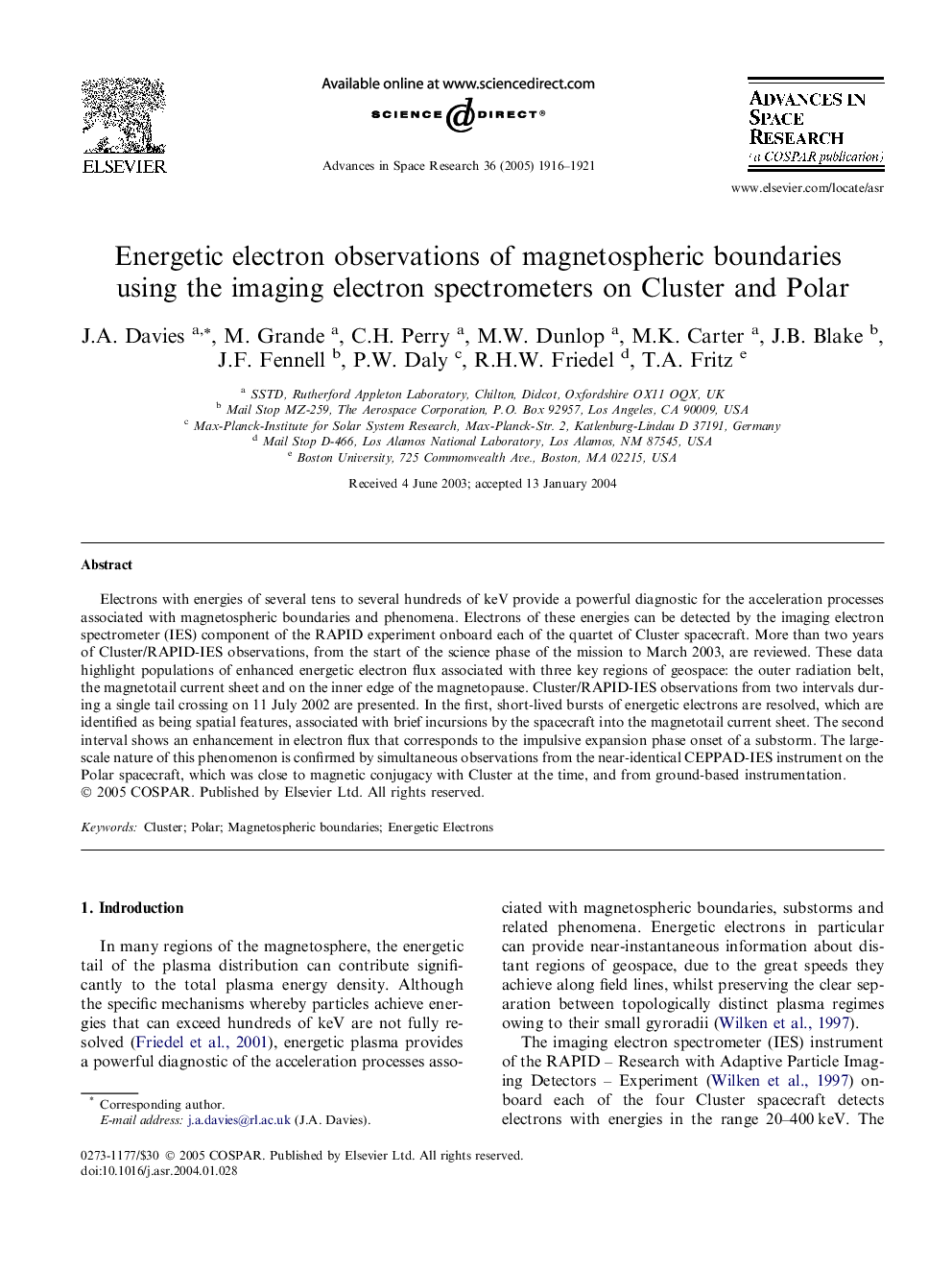| Article ID | Journal | Published Year | Pages | File Type |
|---|---|---|---|---|
| 1767758 | Advances in Space Research | 2005 | 6 Pages |
Electrons with energies of several tens to several hundreds of keV provide a powerful diagnostic for the acceleration processes associated with magnetospheric boundaries and phenomena. Electrons of these energies can be detected by the imaging electron spectrometer (IES) component of the RAPID experiment onboard each of the quartet of Cluster spacecraft. More than two years of Cluster/RAPID-IES observations, from the start of the science phase of the mission to March 2003, are reviewed. These data highlight populations of enhanced energetic electron flux associated with three key regions of geospace: the outer radiation belt, the magnetotail current sheet and on the inner edge of the magnetopause. Cluster/RAPID-IES observations from two intervals during a single tail crossing on 11 July 2002 are presented. In the first, short-lived bursts of energetic electrons are resolved, which are identified as being spatial features, associated with brief incursions by the spacecraft into the magnetotail current sheet. The second interval shows an enhancement in electron flux that corresponds to the impulsive expansion phase onset of a substorm. The large-scale nature of this phenomenon is confirmed by simultaneous observations from the near-identical CEPPAD-IES instrument on the Polar spacecraft, which was close to magnetic conjugacy with Cluster at the time, and from ground-based instrumentation.
